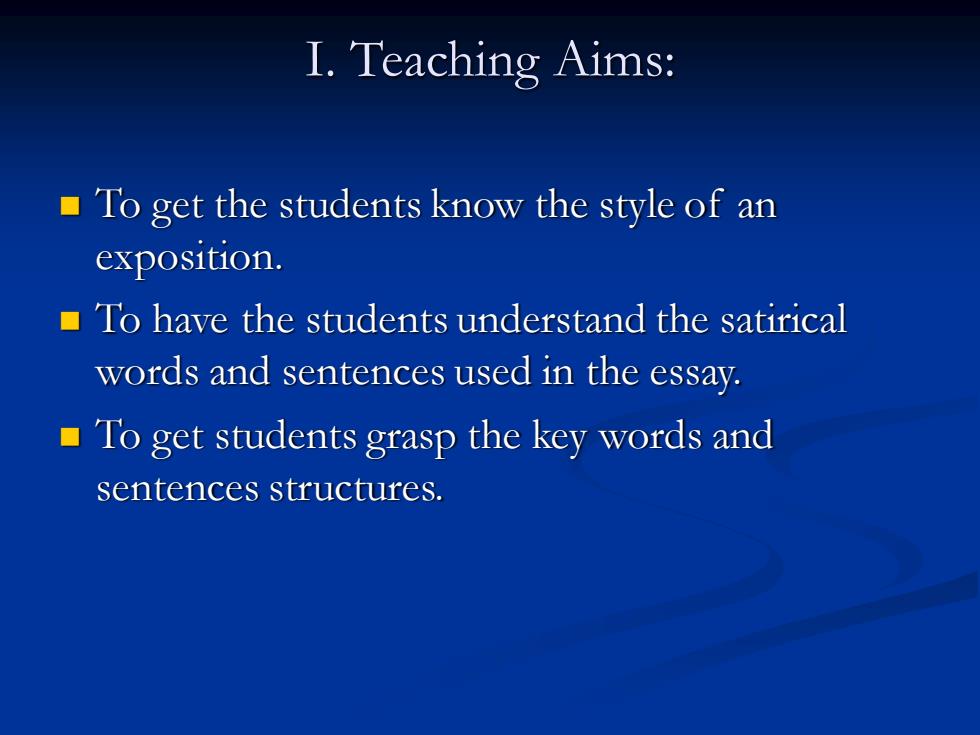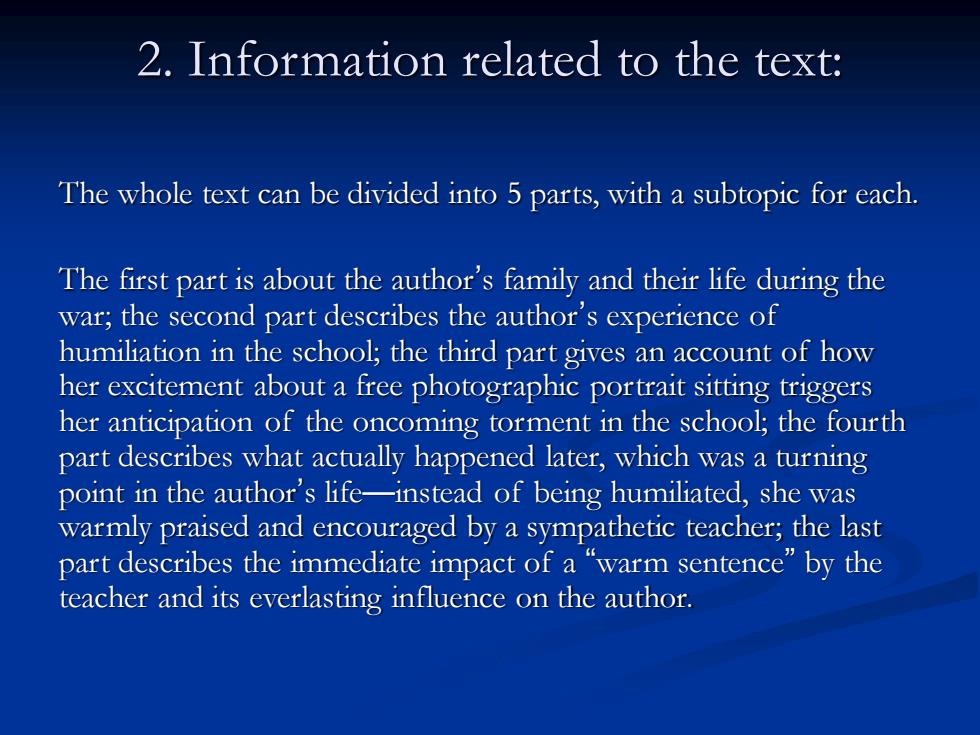
Unit 2 A Class Act
Unit 2 A Class Act

I.Teaching Aims: To get the students know the style of an exposition. To have the students understand the satirical words and sentences used in the essay. To get students grasp the key words and sentences structures
I. Teaching Aims: ◼ To get the students know the style of an exposition. ◼ To have the students understand the satirical words and sentences used in the essay. ◼ To get students grasp the key words and sentences structures

II.Teaching Importance and Difficulties: Understand the author's main purpose of writing the essay. Know the writing strategies of the text. Grasp the key language points in the text. III.Teaching periods:6 periods
II. Teaching Importance and Difficulties: ◼ Understand the author’s main purpose of writing the essay. ◼ Know the writing strategies of the text. ◼ Grasp the key language points in the text. III. Teaching periods: 6 periods

1.Warming up Exercises 1.Share you high school experience with the class 2.Tell the story of a teacher who impressed you with his or her kindness
1. Warming up Exercises 1.Share you high school experience with the class 2. Tell the story of a teacher who impressed you with his or her kindness

2.Information related to the text: The whole text can be divided into 5 parts,with a subtopic for each. The first part is about the author's family and their life during the war;the second part describes the author's experience of humiliation in the school;the third part gives an account of how her excitement about a free photographic portrait sitting triggers her anticipation of the oncoming torment in the school;the fourth part describes what actually happened later,which was a turning point in the author's life-instead of being humiliated,she was warmly praised and encouraged by a sympathetic teacher;the last part describes the immediate impact of a "warm sentence"by the teacher and its everlasting influence on the author
2. Information related to the text: The whole text can be divided into 5 parts, with a subtopic for each. The first part is about the author’s family and their life during the war; the second part describes the author’s experience of humiliation in the school; the third part gives an account of how her excitement about a free photographic portrait sitting triggers her anticipation of the oncoming torment in the school; the fourth part describes what actually happened later, which was a turning point in the author’s life—instead of being humiliated, she was warmly praised and encouraged by a sympathetic teacher; the last part describes the immediate impact of a “ warm sentence ” by the teacher and its everlasting influence on the author